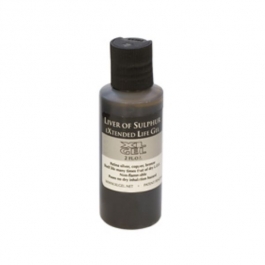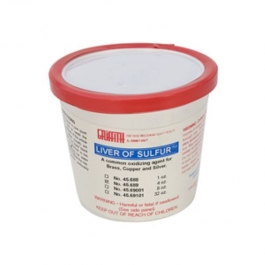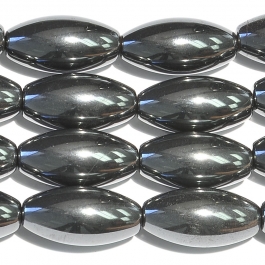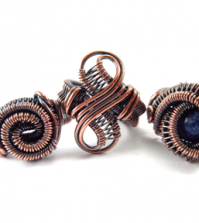- NEW DVD Series – Stone Setting with Bezels
- Tube Set Charm by Kim St. Jean
- Prong Basket Pendant by Kim St. Jean
- NEW DVD Series – Stone Setting with Cold Connections
- New DVD Series – Stone Setting with Wire
- NEW DVD Series: Introduction to Stone Setting by Kim St. Jean
- Featured Tool: Bracelet Bending Plier
- NEW Dvd by Eva Sherman
- Fun, Fast Fold Forming DVD Series
- Double Band Ear Cuff from Alex Simkin
What is Patina?
Daily Wire Jewelry Tip February 27, 2015
What is Patina?
After we posted our Liver of Sulfur tutorial on Monday, we had quite a few questions come in from our readers. So, today I thought we’d address a these questions.
What is patina?
Patina is a film that develops on the surface of metal over a period of time. Due to exposure to open air and the natural process of oxidation, an aged metal such as copper and silver tends to develop a patina. Because it can take from days to years for patina to occur naturally, we can speed up the process for jewelry-making purposes and create the patina ourselves. One of the more commonly used patinas is Liver of Sulfur (LOS).
Liver of Sulfur:
|
Liver of Sulphur Gel, 2 Ounce Bottle Formulated for extended shelf life, versatility and convenience, this gel makes it easy to use and less mess with better results. May be used in concentrate or diluted in warm water for desired effect. 2 oz. squeeze bottle. Non-hazardous. |
Liver of sulfur is traditionally one of the best oxidizers for silver and other metals. It produces a durable black finish. Simply dissolve in hot water. 4 oz jar comes in lump form. |
|
These convenient sized Ultra-Polish Pads are great for removing tarnish, highlighting when using liver of sulfur or silver black, or polishing to a high luster, fast and easy. Leaves no residue. They are made of thin, tight-bond foam with permanently bonded micro-abrasives. A handy, economical polisher that is truly amazing. Squares are 2″ x 2″ and sold in packs of 5. |
5 Types of Patina:
Here are five additional Patina finishes that you can achieve with a little experimentation. The following techniques begin with the basic process of using Liver of Sulfur. Additional materials or tools are listed.
1. Traditional Antiquing: Black crevices, bright highlights)
Additional supplies:
Scratch brush a piece and burnish it or tumble for 45 minutes or more to a mirror finish. Use the LOS to patina the piece to a dark black. For faster results, work with hotter temperatures and longer soaking, and build color gradually versus doing it in one big jump. After a final soapy rinse, dry the piece and rub “highlights” off with a polishing cloth. See the drama and depth that you have created!
2. The look of hematite:
Additional supplies:
- Tumbler with stainless steel shot.
- Non abrasive hand soap or burnishing solution
- Polishing cloth (optional)
This method will take the “Traditional antiqued” method to the next level, coloring the metal a reflective, deep gray-to-black similar to the mineral hematite. After applying the patina, you may choose to remove or not remove highlights with a polishing cloth. Put the piece in the tumbler, add 1-2 tablespoons of hand soap or the recommended amount of a burnishing solution, and then add water to about an inch above the shot. Tumble for 20-30 minutes. Wow, what sheen!
3. Steely gray/blue-gray brushed finish:
Additional supplies:
- Non abrasive hand soap
Progress through coloring a piece until you reach a gray or blue-gray. Use a steel or brass brush and a bit of hand soap to scratch brush the surface for a steely effect. More brushing will lighten the color, and a stiff brush will be more aggressive than a soft one. This is a soft and subtle patina that can have a sophisticated look!
4. Layered color:
Additional supplies:
- Ammonia if desired
- Scratch brush
- Polishing cloth
- Small brush
Use any LOS recipe to develop one or two shades past gold or light brown, stopping with a cold-water bath. Brush or selectively remove color from portions of the piece with a polishing cloth. Then, wash in soapy water to remove hand oils and polish, and then dip again in LOS. You’ll notice the un-removed patina will continue to darken, while the area where the patina was removed becomes gold.
Also, try detailing the LOS in selected areas. Put the piece on a cup warmer and apply LOS with the brush. Be sure other areas have no LOS residue on them or they will darken as well. Before detailing, wash the piece in the sudsy, baking soda water mix.
5. Iridescent effects:
Additional supplies:
- Ammonia
Adding a tablespoon of ammonia to the LOS solution kicks the process up a notch. Colors intensify and have an iridescent effect. Gold’s become brighter, blues more saturated, and the purples pop. Ammonia, in my opinion, adds an additional element of wonder because it seems to make the LOS solution more “sensitive.” You are likely to get a tonal range instead of flat color. For instance, a pink area may have a subtle pink to bright magenta. If you are particularly interested in a specific effect, a test piece may be in order. Be adventurous and watch how a kick of color can change your whole piece!
Now let’s answer a few additional questions:
1. Will Liver of Sulfur patina to gold-filled metals?
- No, gold alloys will not react to most sulfur solutions.
2. Will Liver of sulfur give patina to fine silver?
- Yes, the copper content in silver reacts with the LOS to result in a patina. Even though fine silver is 99 percent silver, it has sufficient copper to result in a beautiful patina.
3. Will Liver of sulfur patina to brass?
- No, Brass will not react to most sulfur solutions.
4. Will Liver of Sulfur patina to copper?
- Yes LOS will patina copper but you would use cold water.
5. Will Liver of Sulfur affect gemstones?
- Cubic zurconia, glass and man-made gemstones will be unharmed by LOS.
- Most natural gemstones will be unaffected with some exceptions. Turquoise, Lapis, shell, pearls and other soft stones should not come into contact with LOS as they are porous and could be damaged.
What about Metal?
We also had a couple of questions about metal and what kind you can use and the types of finishes it would produce. Below is a quick reference guide to the range of colors possible when used with a specific metal type.
Metal |
Range of color possible |
| Fine Silver | Straw gold, green, pink, blue, purple, gray and black |
| Sterling Silver | Straw gold, green, pink, blue, purple, gray and black |
| Argentium sterling silver | Straw gold, green, pink, blue, purple, gray and black |
| Brass | Brown to black tones |
| Bronze | Brown to black tones |
| Copper | Brown to black tones |
| Gold | None to very pale brown depending on karat |
| Platinum | None |
| Aluminum | None |
| Stainless Steel | None |
| Niobium | None |
| Titanium | None |
If you love using Liver of Sulfur – pick up some today and get started on your next project!
Happy Wrapping!
![]()
Resources:
A Jewelry Artist Guide to Liver of Sulfur Patinas and Finishes


























Bobbi Fox
February 27, 2015 at 7:40 am
Thank you so much for the detailed information on patina. I can’t wait to try it out! However, I have a question. When a piece of jewelry is patinaed, do those colors stay indefinitely or do we need to protect (coat) the metals in some way? If so, what and how do we apply it?
Jan
February 27, 2015 at 12:06 pm
Great article. Is there a way to guarantee a certain color? Adding more ammonia? Less Ammonia? thanks. Jan
Cynthia
March 9, 2015 at 6:34 am
HI Dale,
I just finished reading the liver of sulfur. Could you please explain what you mean by “•Scratch brush”?
Regards,
Cynthia
Ketan Ahuja
February 7, 2017 at 2:23 am
yes quite useful your information about wire jewelry, You can read also about wire jewelry at http://www.supermetalind.com/product/brass-wire/brass-jewelry-wire/